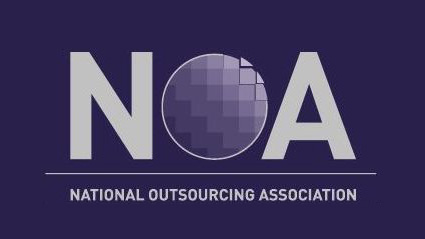
This article originally appeared in the National Outsourcing Yearbook 2015: download here
In June 2007 Apple launched the first iPhone, since when consumers have fully embraced digital, any time, any place consumption and service. If they want to tweet you from their phone at 2am, chat with a live agent from their browser before finalising a purchase, or use their tablet to video-link with technical support from the middle of nowhere, you’d better be able to respond.
Unfortunately this new business reality, and the investment it requires of companies, arrived at the worst possible time. Just six months after the iPhone launch, in December 2007, the global economy was sucker-punched by the start of the Great Recession. Despite recent signs of recovery most companies are still under pressure to reduce costs, headcounts and capital spending.
A Way Out of the Trash Compactor
For occupiers of the C-Suite it must feel like being trapped in the trash compactor from the first Star Wars movie. On one side there is the pressure to be more efficient, and on the other the need to do more to meet customers’ new demands. Han, Luke and Leia escaped by passing the job on to R2D2, a droid. The same mix of outsourcing and technology can help companies meet their challenges today.
In this article we will look at how outsourced service providers (OSPs) able to leverage the right technology can have a transformative impact on their clients’ businesses by facilitating omni-channel communication.
Omni-Channel Technology
As the graph below from Dimension Data’s Global Contact Centre Benchmarking Report shows, your competitors are going omni-channel because that’s what your customers are doing.
Channels used in the contact centre
Omni-channel does not mean focussing on every fancy new channel and device. One of our OSP clients, Alistair Niederer, CEO of Teleperformance UK, says: “This misses the point. A company like ours is actually focused on ‘this generation customer service’, not just what the media is saying is cool at present or in the near future.”
The challenge is to keep pace with customers’ demands for new channels and functionality as they evolve. Which means it is not enough to just have in place a future-proof technology platform that allows you to add new channels as they become available. You must also be able to integrate customer data, product data, knowledge and IT systems from multiple departmental silos to provide customers with a seamless experience as they move from channel to channel. The agent who speaks to a customer on the phone should know about the tweet, the email and the web chat that led up to the current conversation, otherwise the customer experience suffers. The dream of a single agent view now has to become a reality.
82% of companies see the contact centre as a competitive differentiator. But over 80% believe their current IT systems will not meet future needs. (Dimension Data 2013/14 Global Contact Centre Benchmarking Report)
Increasing Capabilities, Reducing Costs
Whether acquiring or servicing customers, meeting their new demands actually goes hand-in-hand with reducing costs if you have access to the right technology. Self-service eliminates unnecessary calls; knowledge bases speed up interactions and improve their quality; and a single agent view reduces AHT and ensures cross-channel consistency. But most contact centres are burdened with technology infrastructures that are not up to today’s omni-channel requirements.
The answer to their problem may lie in outsourcing. Smart OSPs are using technology providers like Infinity CCS to access state-of-the-art technology with pay-as-you-go, massively scalable cloud and hybrid delivery models that help further reduce costs, eliminate capex spending and facilitate rapid testing and roll-out. Those OSPs can then pass on these benefits to their clients.
The Transformation of Outsourcing
With access to the necessary technology, OSPs can now not only manage but transform the functions they manage. Instead of being given systems and a job and relying on economies of scale to deliver savings, OSPs are now able to address competitive business goals – service or acquire customers, increase NPS or advocacy scores.
Our client David Turner, CEO of Webhelp UK, a leading OSP in the customer experience management sector, says: “While OSPs have typically been reluctant to invest in technology ahead of client demand, many are now realising that their future prosperity depends on their ability to manage multiple channels and are investing in technology to support it.” They are doing so, he says, to enable their clients to achieve “a step change in customer management capability, as well as a real and sustainable reduction in cost.”
In recent years OSPs have built robust technology infrastructures capable of coping with the ever-more stringent compliance and data security requirements placed upon them. While no doubt a good thing, this can conflict with the need to be responsive and nimble.
Partnering with a technology company like Infinity CCS – as OSPs such as Teleperformance, Webhelp, HGS and Interact do – brings them this flexibility. With our single agent view and on-demand contact centre solutions, OSPs are able to satisfy their clients’ demands for transformative services quickly, efficiently and without overloading their internal IT teams.
Ask for More, for Less
The new business reality ushered in by customers’ adoption of multiple digital channels and the Great Recession’s lingering impact on budgets is not going away. The good news is enlightened OSPs that have adopted on-demand technology infrastructures can help any company meet these two seemingly contradictory challenges head-on.


